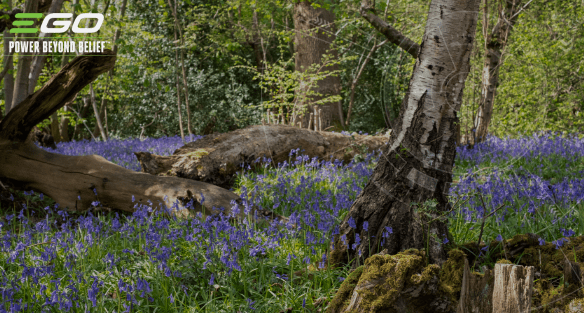There is a common misconception that felling trees is an anti-environmental practice and that trees should be left alone in order to create a thriving environment.
However, chopping down trees is all part of a carefully managed ecosystem and can bring many benefits to the environment the trees are situated in.
When you should not cut down a tree
Not every tree needs to be felled, and sometimes it is a good idea to leave it be. If you have a tree growing in your garden, then you should leave it alone if:
- It is not shading areas of your garden you have a better use for
- It is not planted in an intrusive spot
- It is not at risk of falling and damaging property, or worse, injuring someone
- The tree’s roots won’t interfere with the foundations or pipework of your property
- The tree is relatively young, and isn’t likely to cause one of the above issues as it grows
Why felling trees has its own importance
It is easy to see why the general public think that cutting down trees is bad for the environment. After all, a lot of our daily items come from trees. Whether that be the chairs we sit on, the paper we use to write on or the tables we eat from. These all started life as a tree, or several.
Whilst it’s true that a tree has to fall in order to create these items, there are actually immense sustainable and environmental benefits that come from felling trees.
Forest restoration
Nature has its own way of destroying trees through forest fires, lightning strikes and severe wind. This destruction in turn promotes new growth and the forest bounces back and is restored to its original glory.
Felling trees selectively through human intervention is no different. Older trees compete for nutrients and sunlight, which in turn discourages younger trees from growing to full strength.
Removing the older trees prevents stagnant growth within the forest and promotes an ecosystem that continues to live on.
This is because trees that are removed make space for other trees to grow in their place. The new growth is a result of other trees self seeding or through environmental efforts such as ‘Challenge 2025' that EGO is committed to.
Biodiversity of the forest
Felling trees in the forest encourages a diverse and healthy forest ecosystem. An abundance of plants and animals thrive in the habitat and selectively removing trees allows species such as brambles, mushrooms, crab apples and wild cherry trees to flourish.
This diverse mix of flora and fungi provides a food and shelter source for various woodland creatures such as deer, rodents, robins and beavers.
A renewable resource
Historically, forests and woodlands would be cleared in large swathes at a time, with little care, attention or regard for the environment.
In modern times, sustainable logging practices ensure the forests live on and the environment as a whole remains diverse and intact.
Infection and disease prevention
In a forest, just one or two trees infected with a disease can eventually spread to the rest of the woodland, causing it to be entirely wiped out. Felling and disposing of the infected trees removes this threat and therefore allows the forest to continue to thrive for many more years.
Felled trees and the garden
If you have had a tree removed from your lawn, there are many ways you can recycle it in the garden:
- Use your cordless chainsaw to create a woodpile in your garden, perfect for creating an environment where beneficial creatures can thrive
- Bury logs in the garden to create a hugelkultur bed, where a diverse range of plants will flourish
- Cut the trunk into sizeable lengths and use them as a border for a raised bed, fill it full of compost from your compost mound and grow fruit and vegetables in it
Even if you decide to leave the tree alone in your garden, it will need some maintenance such as pruning during the winter. Whatever jobs are on your list this winter, make sure you have the right tools for the job and check out our range of battery powered chainsaws.
